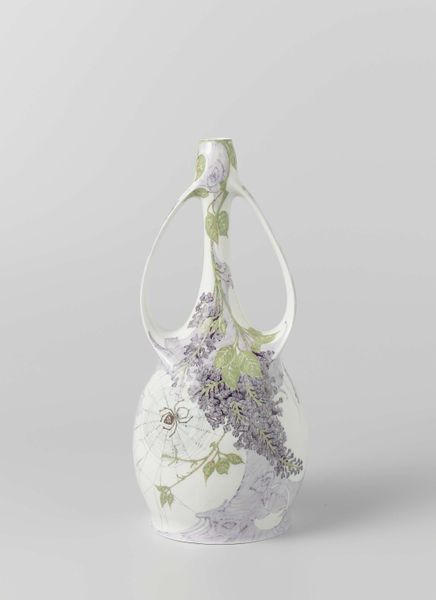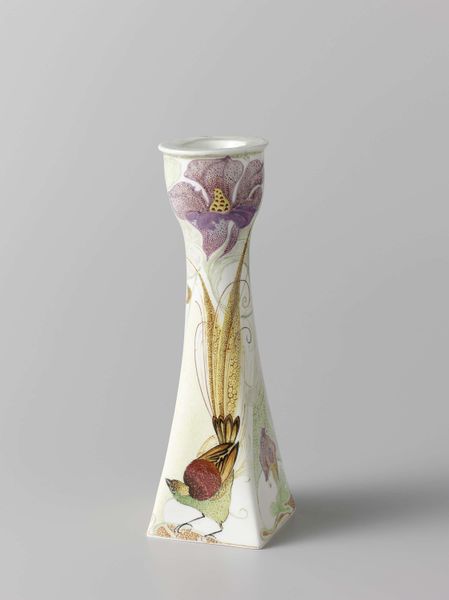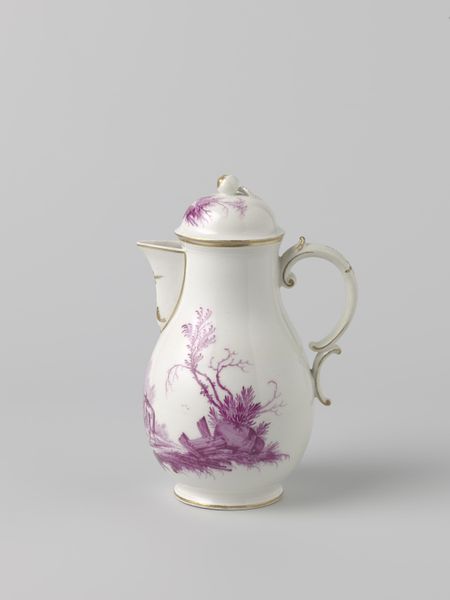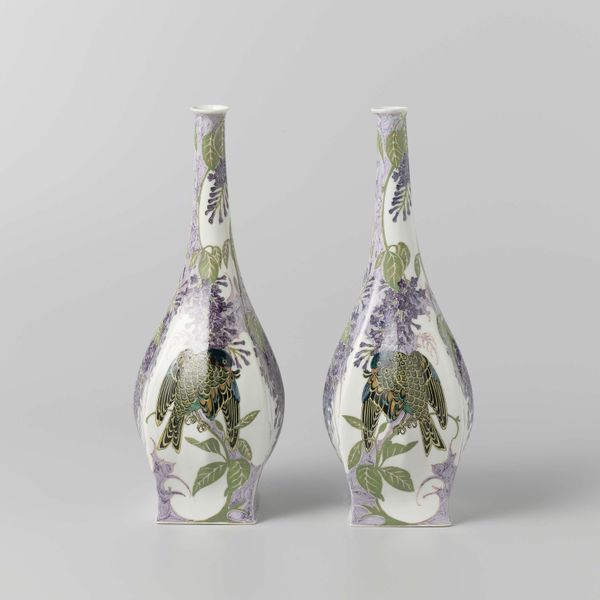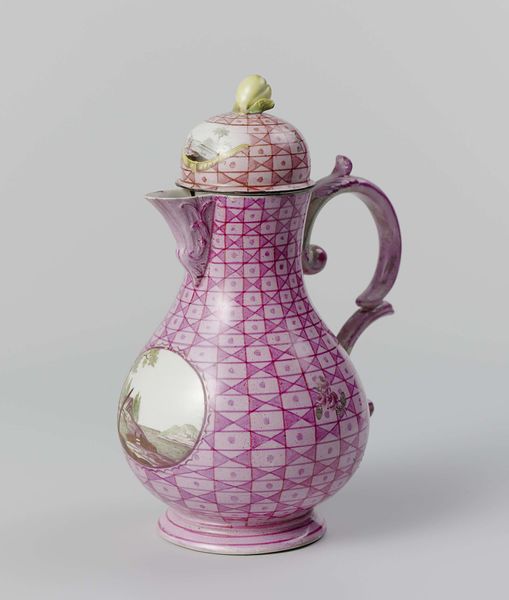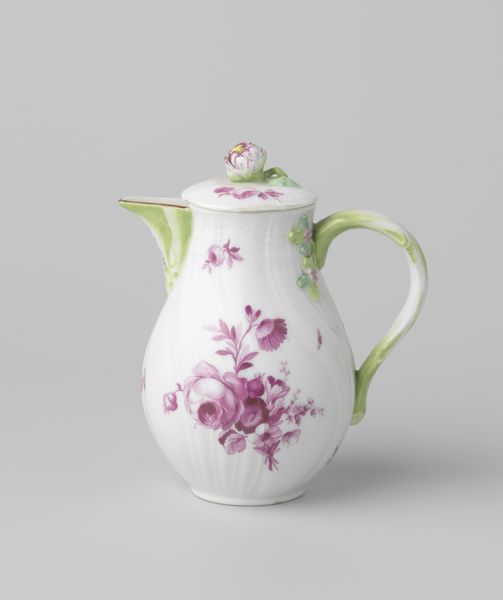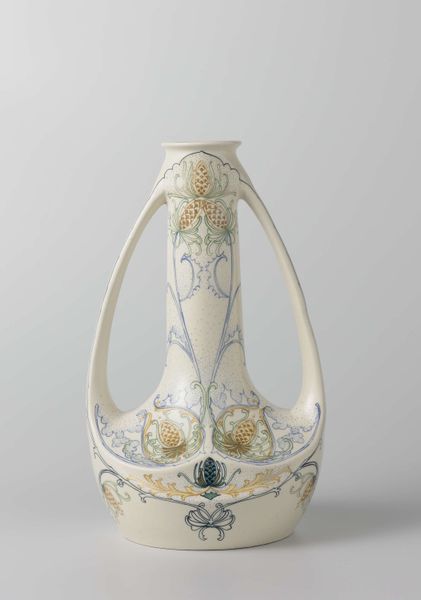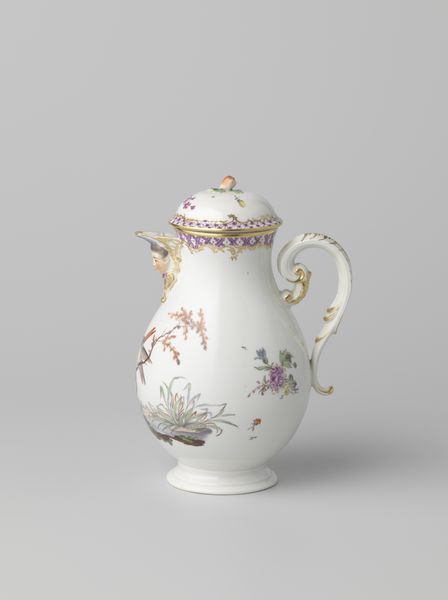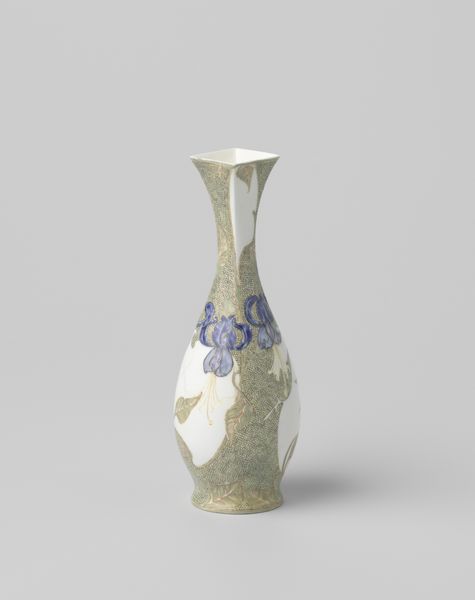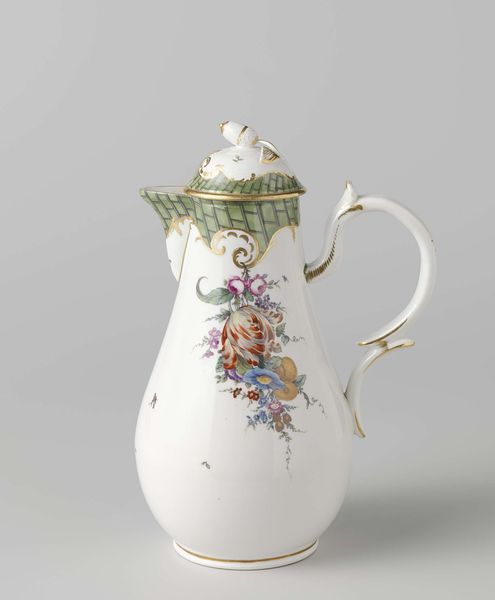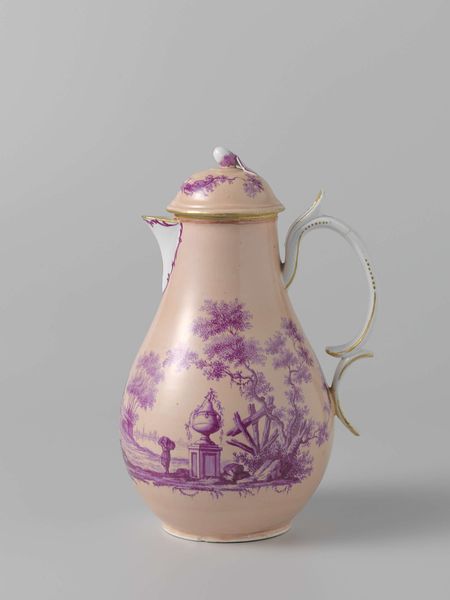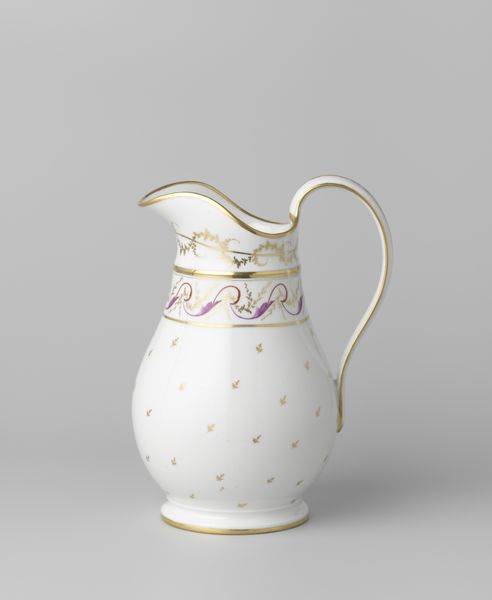
Vaas met vier oren, veelkleurig beschilderd met orchideeën 1902
0:00
0:00
ceramic, earthenware
#
art-nouveau
#
ceramic
#
earthenware
#
decorative-art
Dimensions: height 26.5 cm, width 19.8 cm
Copyright: Rijks Museum: Open Domain
Curator: This remarkable object is a vase with four ears, meticulously hand-painted with orchids. It was created around 1902 by N.V. Haagsche Plateelfabriek Rozenburg. The piece is earthenware, showcasing the artistry of decorative art and the elegance of the Art Nouveau style. Editor: The first thing I notice is how the light seems to move around it, playing off those open, looping forms. It feels surprisingly weightless, considering it's made of ceramic. There's such a delicate balance to the design. Curator: Absolutely. What Rozenburg achieved here involved very particular production techniques and kiln temperatures. Earthenware allows for this kind of intricate form and detailed painting, but getting it fired without any sagging of those tall extensions or flaws in the glaze speaks to very specialized craftsmanship. Editor: And those orchids…they’re not just decorative. Orchids, particularly around the turn of the century, were laden with meaning. Symbolizing love, beauty, even refinement, they tap into this whole language of flowers. The deep purples and lighter pinks give off a very sensual vibe. Curator: Yes, but it’s crucial to see how these meanings intersect with the burgeoning consumer culture. Art Nouveau and firms like Rozenburg, while often presenting an image of handcrafted luxury, were also catering to a growing market hungry for these fashionable decorative objects. So it’s both artistry and canny business sense on display. Editor: I agree. And notice the 'ears'. The additional loops imply a greater ability for the flowers to visually spill out, while simultaneously giving the artists more ceramic real estate to play with the orchids as design elements. They function as an additional framing for nature itself, and it further amplifies those symbolic elements. Curator: So considering the materials used, how Rozenburg manipulated earthenware for elaborate form, and what role it might have occupied as luxury items entering a marketplace with developing modern sensibilities, we are compelled to explore both artistic values as well as their integration with everyday consumption. Editor: Exactly! By contemplating both visual and functional implications of each detail within its historical context we can grasp something further – how art elevates and is ultimately elevated by material culture.
Comments
No comments
Be the first to comment and join the conversation on the ultimate creative platform.
